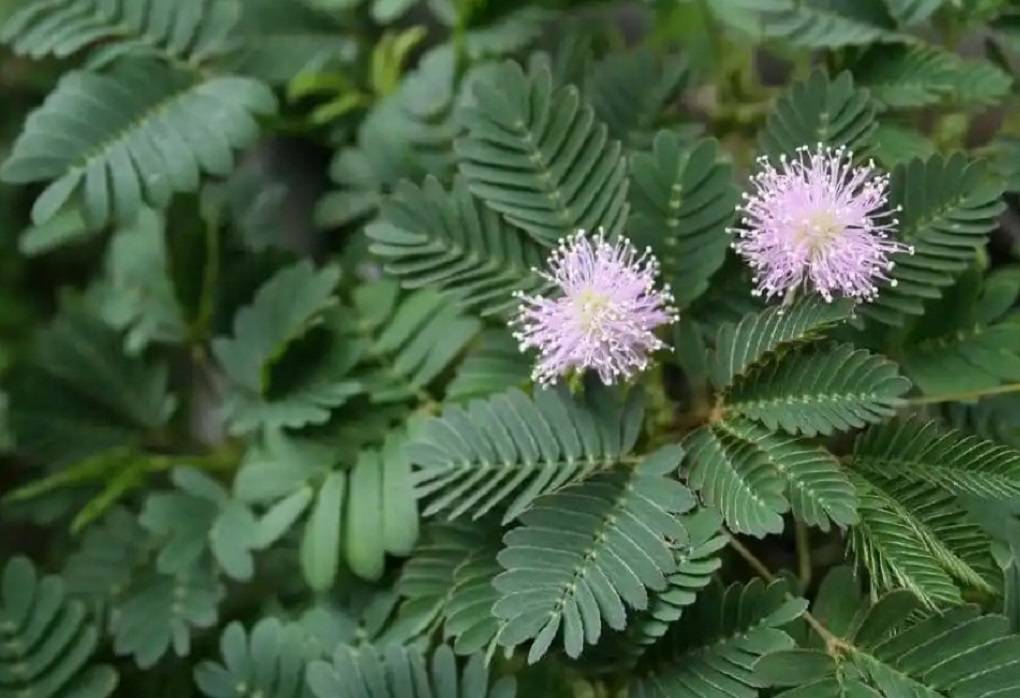
The Mimosa plant is a fast-growing evergreen tree that has fern-like leaves and fluffy flowers with a strong fragrance. There are several species of mimosa plants and in India, the most common variety found is Mimosa Pudica or the ‘Touch-me-not.’ Let’s take a look at how to plant, grow, and care for the mimosa plant.
Where to plant mimosa?
The most suitable time for planting a Mimosa plant is in spring or fall. You must choose a spot that receives adequate partial or direct sunlight and is ideally sheltered from the wind. It can also be grown in a pot that is kept indoors, on the balcony, on the terrace. The optimal temperature for this plant to thrive is 23 to 25 degrees Celsius.
Mimosa plants tend to do well in well-drained and stony soil. It is best to avoid heavy clay soil as it retains a lot of water. This plant is also not compatible with either heavy or limestone soils. In case chalky soil is the only type of soil available to you, then select a mimosa tree that has been grafted with a local native rootstock.
Pro tip- If you live in a place that receives heavy snowfall, then it is best to plant your mimosa plant in a pot that you can easily bring indoors. Cold wind can also cause significant damage to the plant.
When to water the mimosa plant?
It is important to water the plant regularly for the first couple of weeks after planting it. Once the plant has adapted to its surroundings and has developed a root system, it requires minimal care. Therefore, you can water the plant whenever the soil starts to appear slightly dry. However, do not overwater the plant as it can lead to diseases such as root and stem rot. During hot weather, water the mimosa plant evenly in the evening to avoid water from immediately evaporating.
Pest control measures
One of the reasons why many people consider mimosa plants super easy to care for is that it is not susceptible to any specific pests or diseases. You can take usual precautions such as regularly inspecting for signs of infestations and keeping your mimosa plant separate from infected plants to avoid pest infestations.
Pruning Tips
In many countries, mimosa plants and trees display vigorous and invasive growth. The practice of pruning is beneficial for the appearance and overall health of the mimosa plant. For instance, it helps get rid of dying or dead leaves and stems. It also gives the plant a more dense and rounded appearance. The best time to prune is after the flowering season is over.
Health benefits of the Mimosa (Pudica) plant
There are several medicinal uses and health benefits of the mimosa pudica plant. It possesses antibacterial, antivenom, antidepressant, and aphrodisiac properties. Historically, in many cultures, it has been used as a treatment for piles, dysentery, and sinus.
-
Traditionally, the roots of the mimosa pudica plants have been used to treat asthma, jaundice, ulcers, fever, snake bites, and diarrhoea.
-
The leaf extract of mimosa pudica plant is used as a remedy for treating wounds.
-
The mimosa plant’s extracts are used to treat depression, improve brain function, and reduce anxiety.
-
The plant has anti-inflammatory properties and can be used to treat acne, bloating, and swelling.
-
Its extract is also used to treat diarrhoea.
















